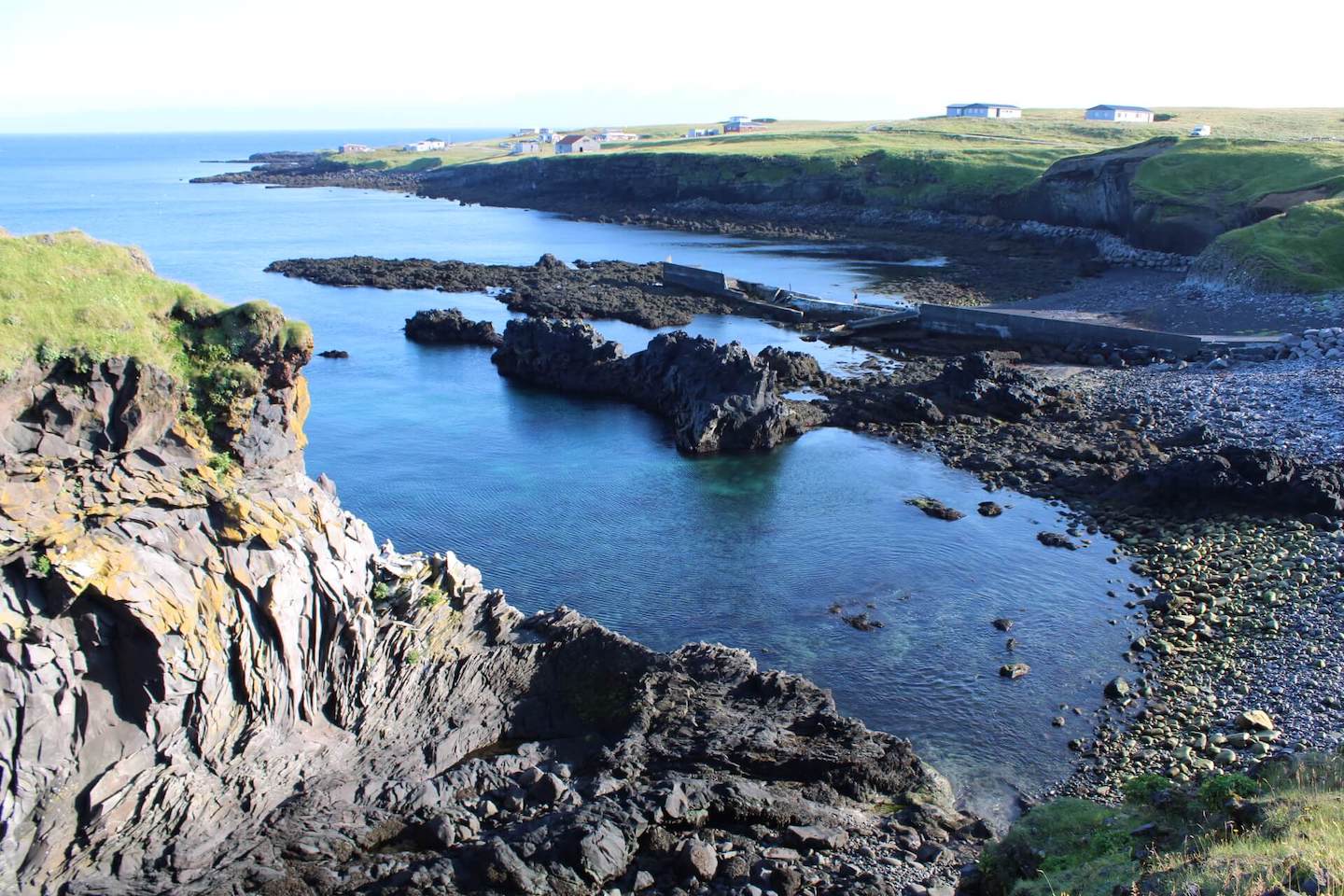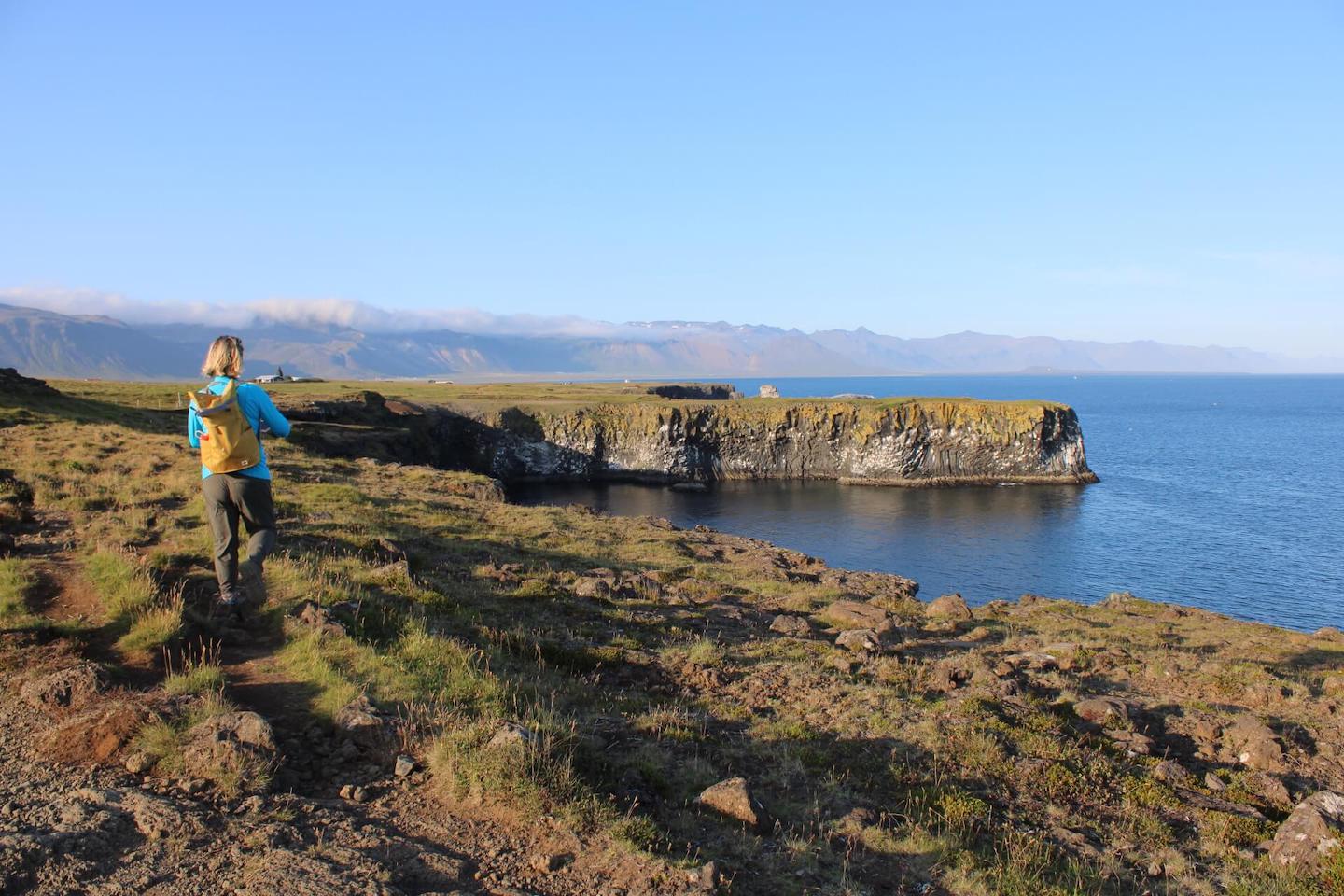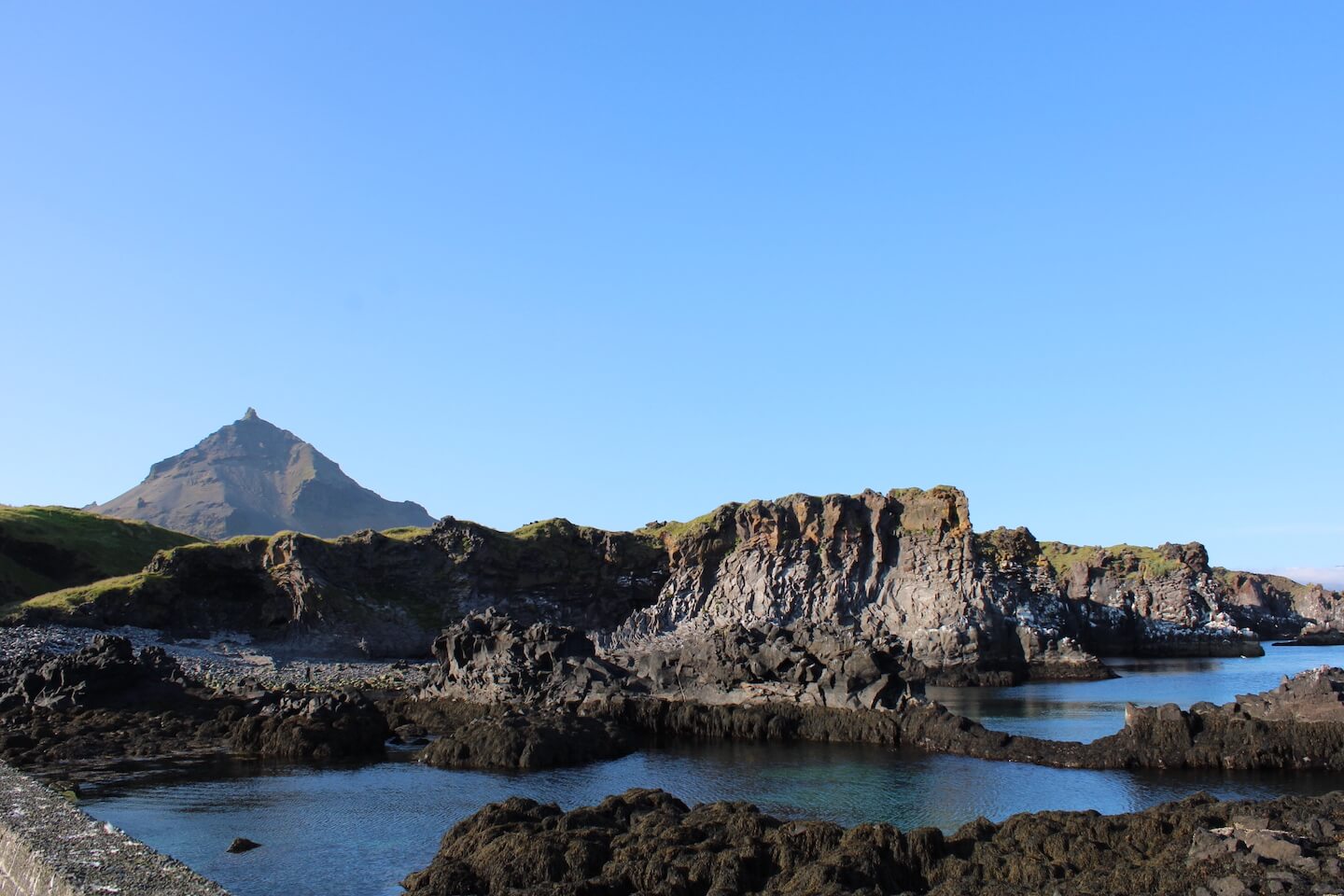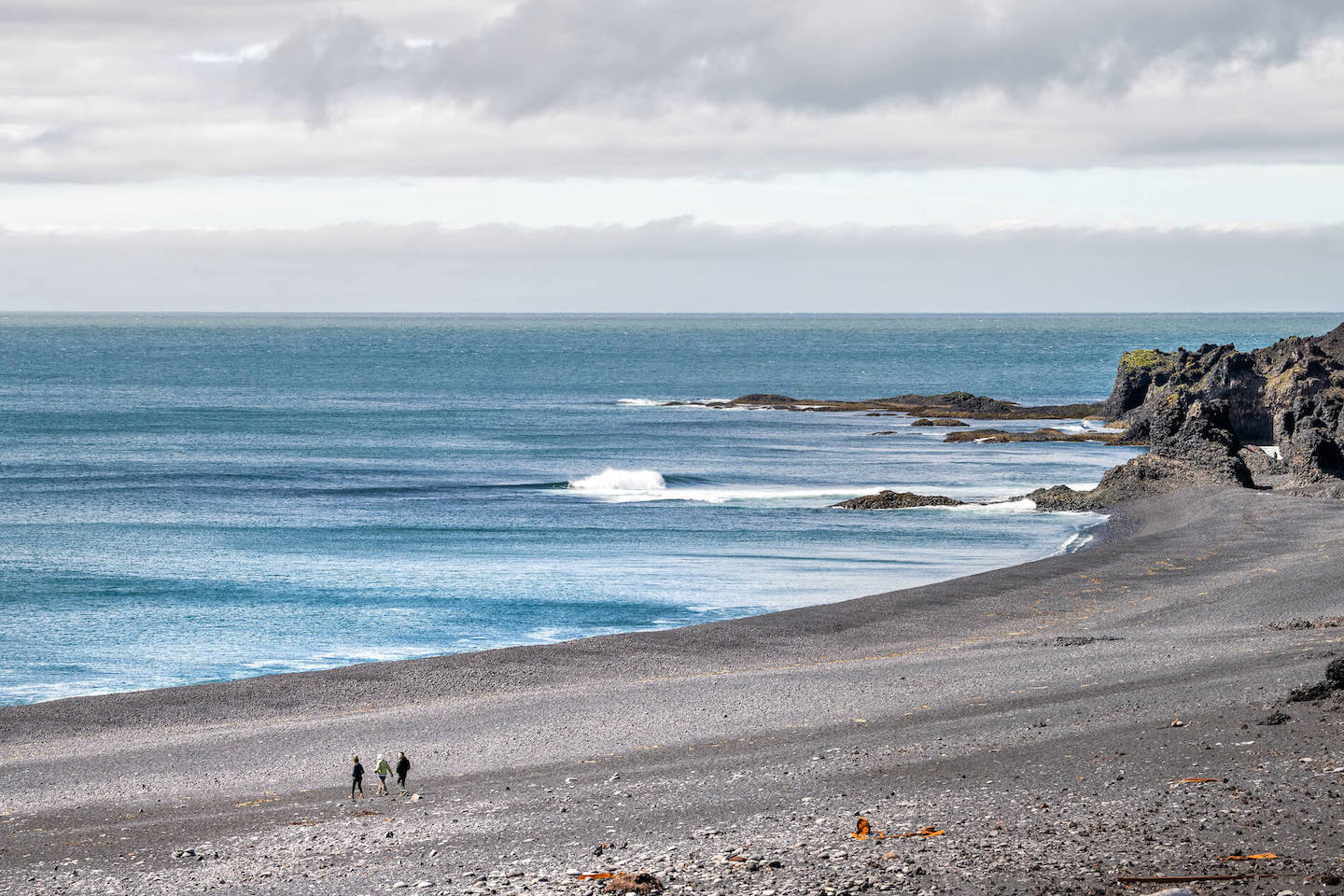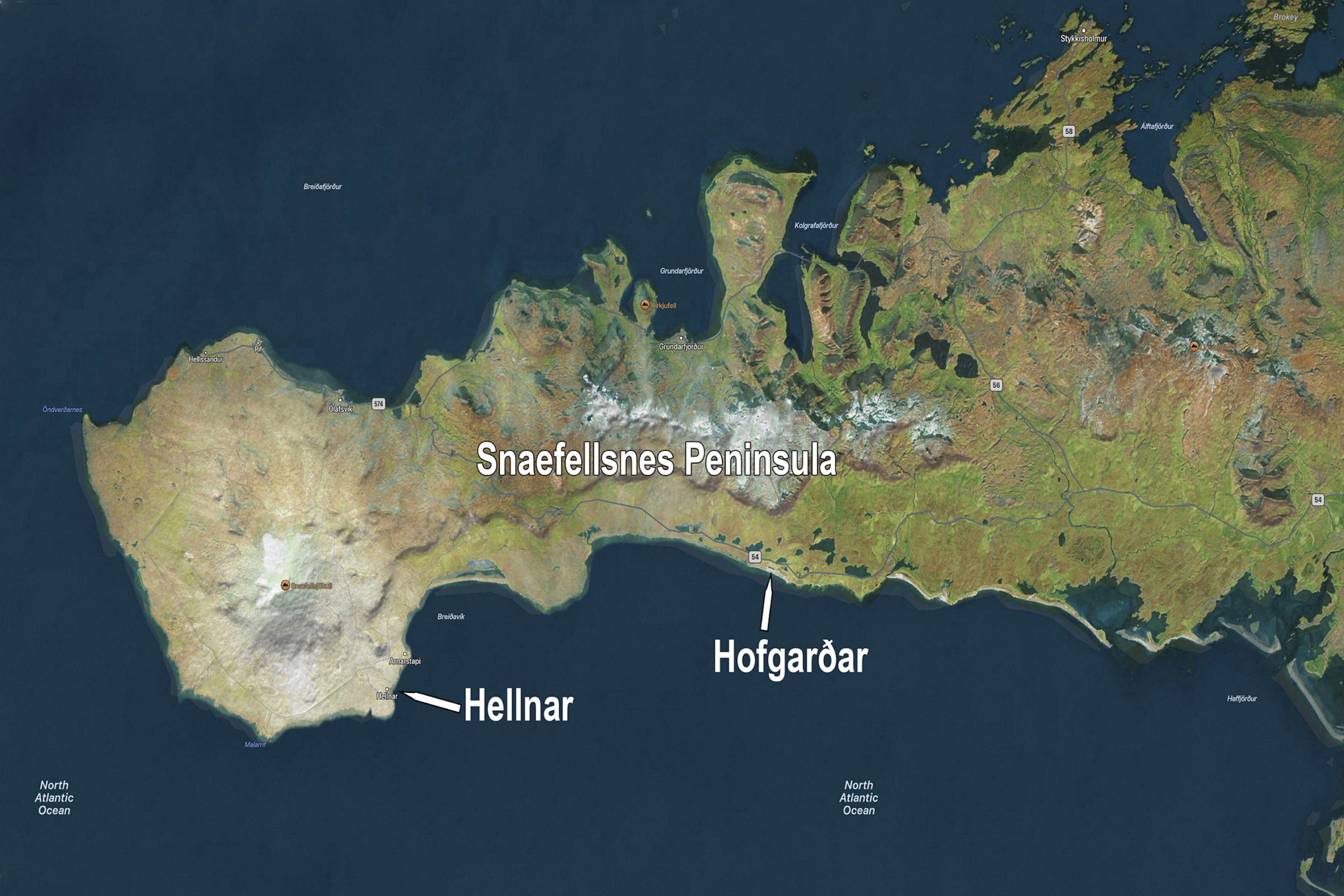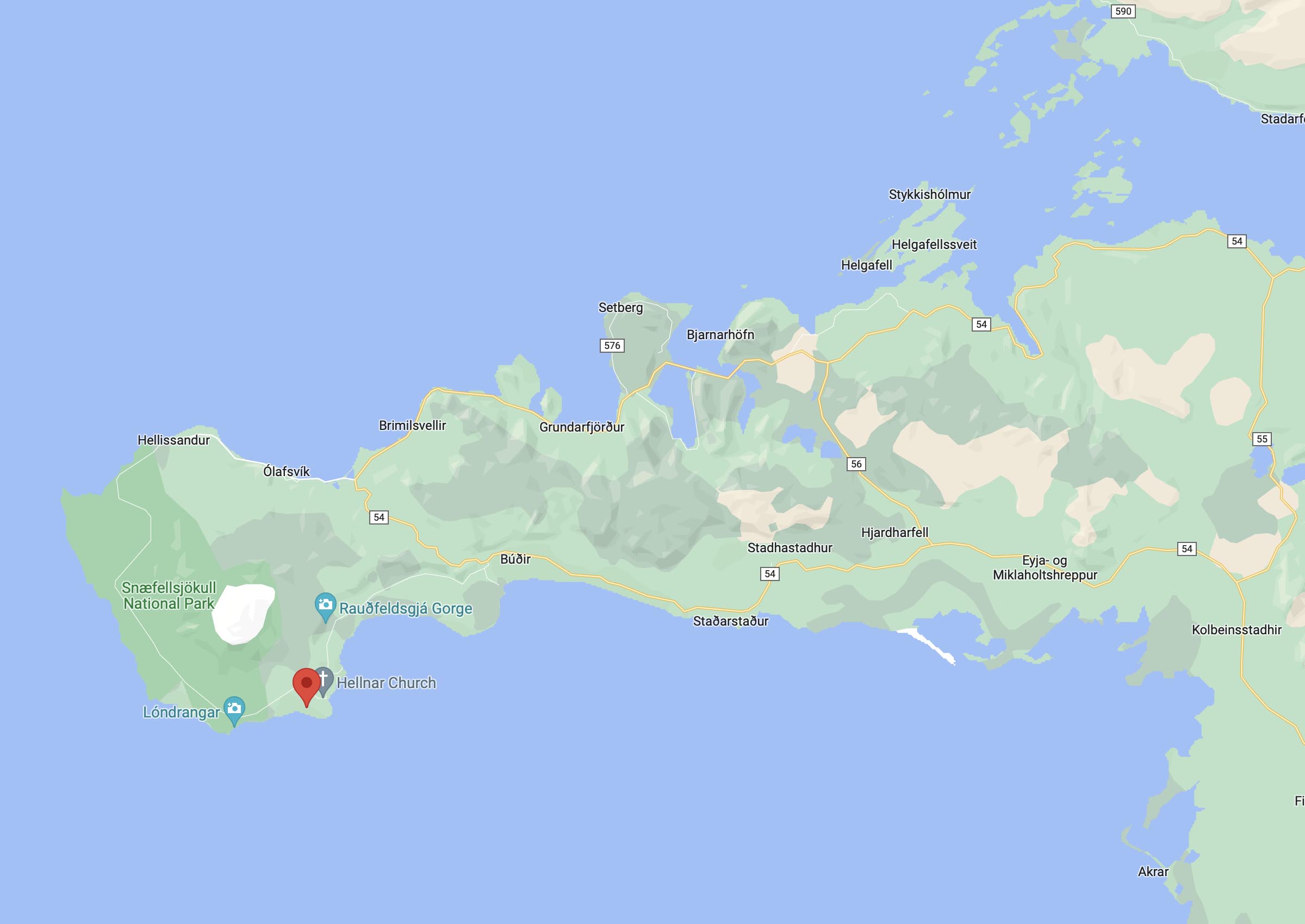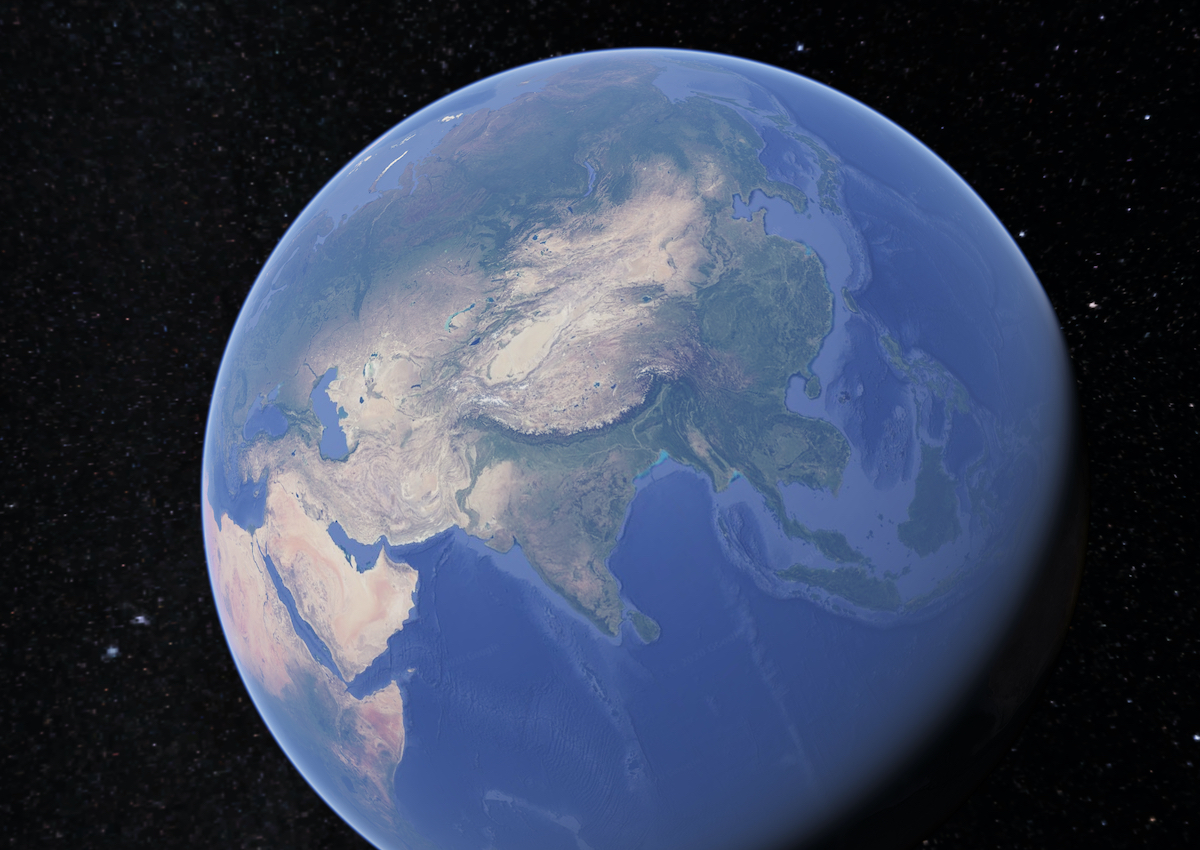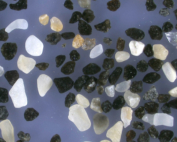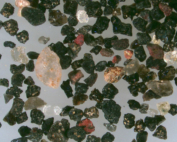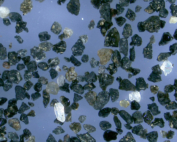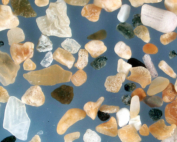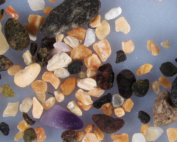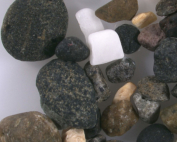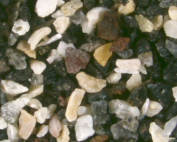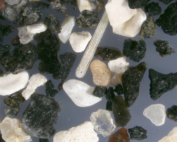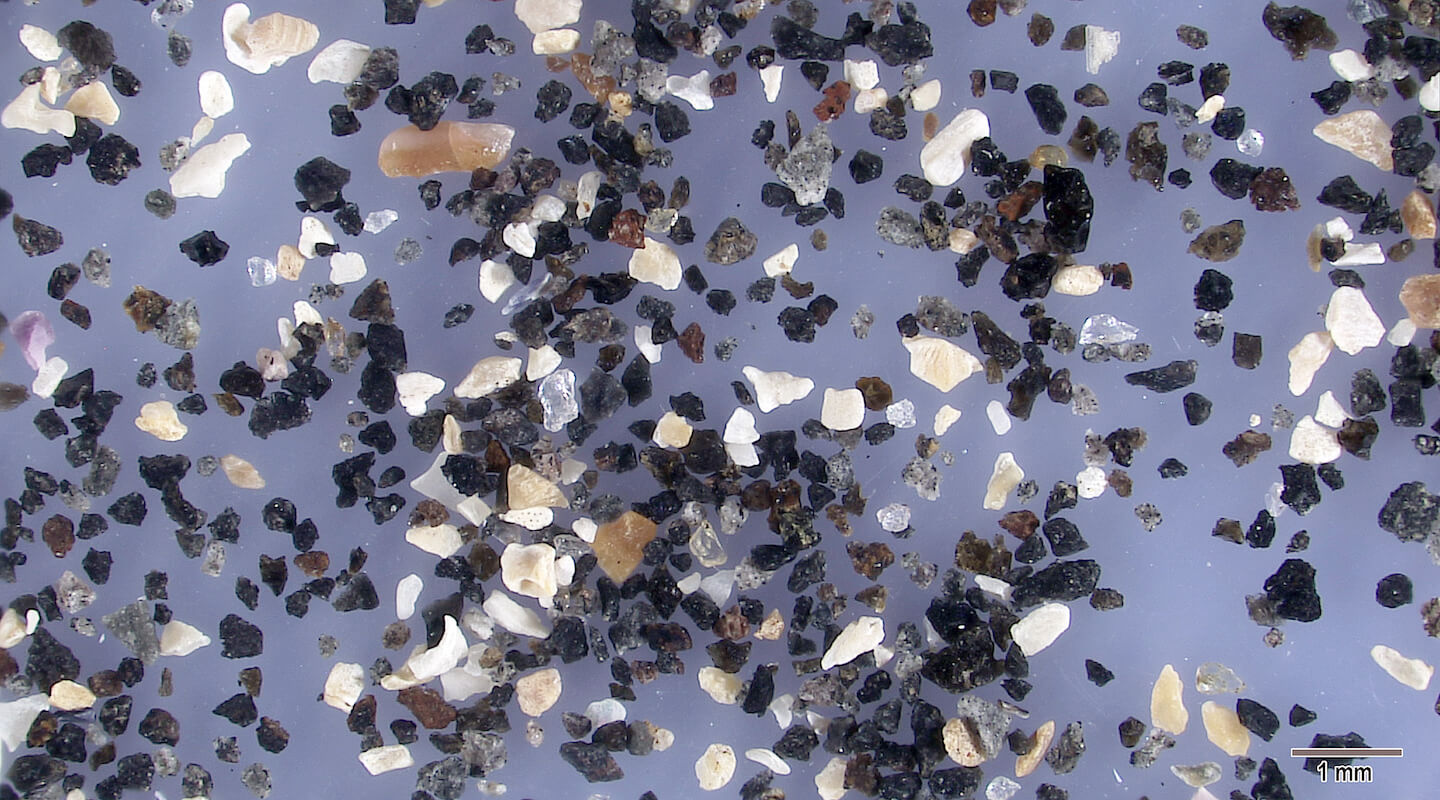
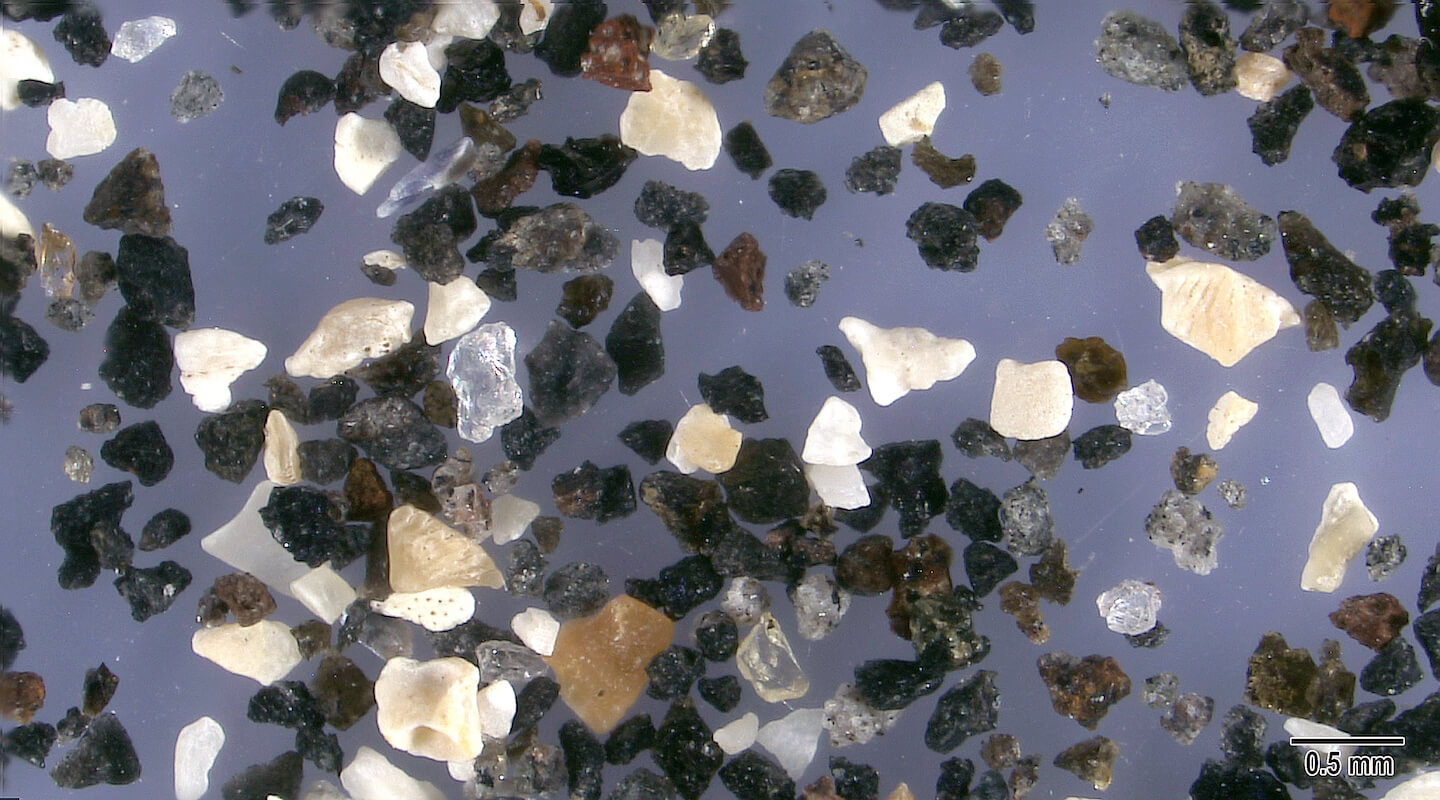
Sand grains are angular with minimum smoothing from wave action. White and tan sand grains are broken bits of marine shells, some of which have grooves and patterns. Gray, reddish and dark black grains are of geological origin. Some clear quartz sand grains are also present.
Geographic Overview
Hellnar, a picturesque town in the westernmost part of the Snaefellsnes peninsula, has a dramatic coastline of spectacular and stunningly beautiful rock formations. Its uniquely diverse geology offers examples of Iceland’s natural elements all in one place. The surrounding area provides examples of waterfalls, rock formations, beautiful beaches, and historic villages.
Sand Gallery
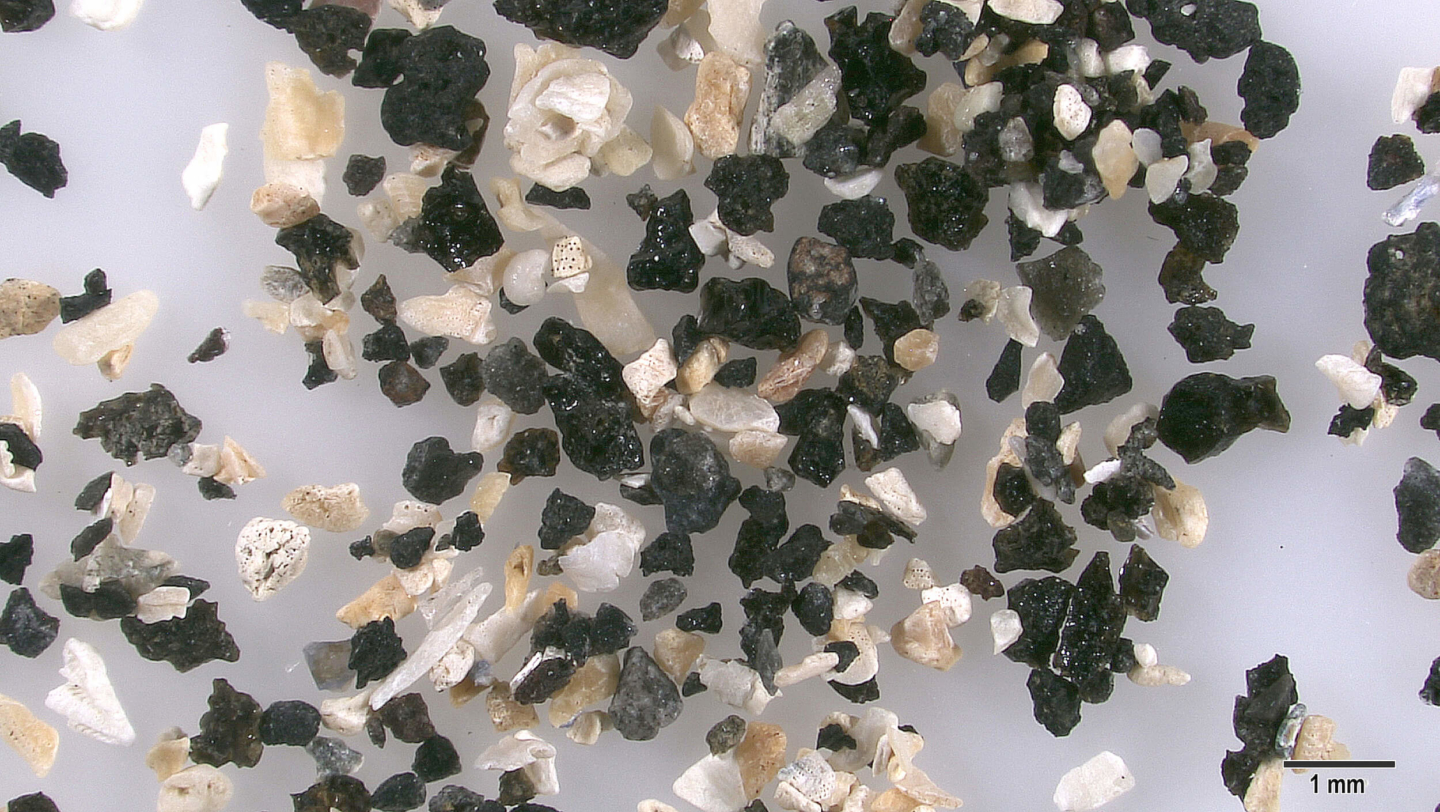
The dark sand grains are volcanic basalt while the light tan and white sand grains are fragments of mollusk shells. The fairly sharp edges of the sand grains, particularly the dark volcanic grains, indicate they are relatively young geologically.
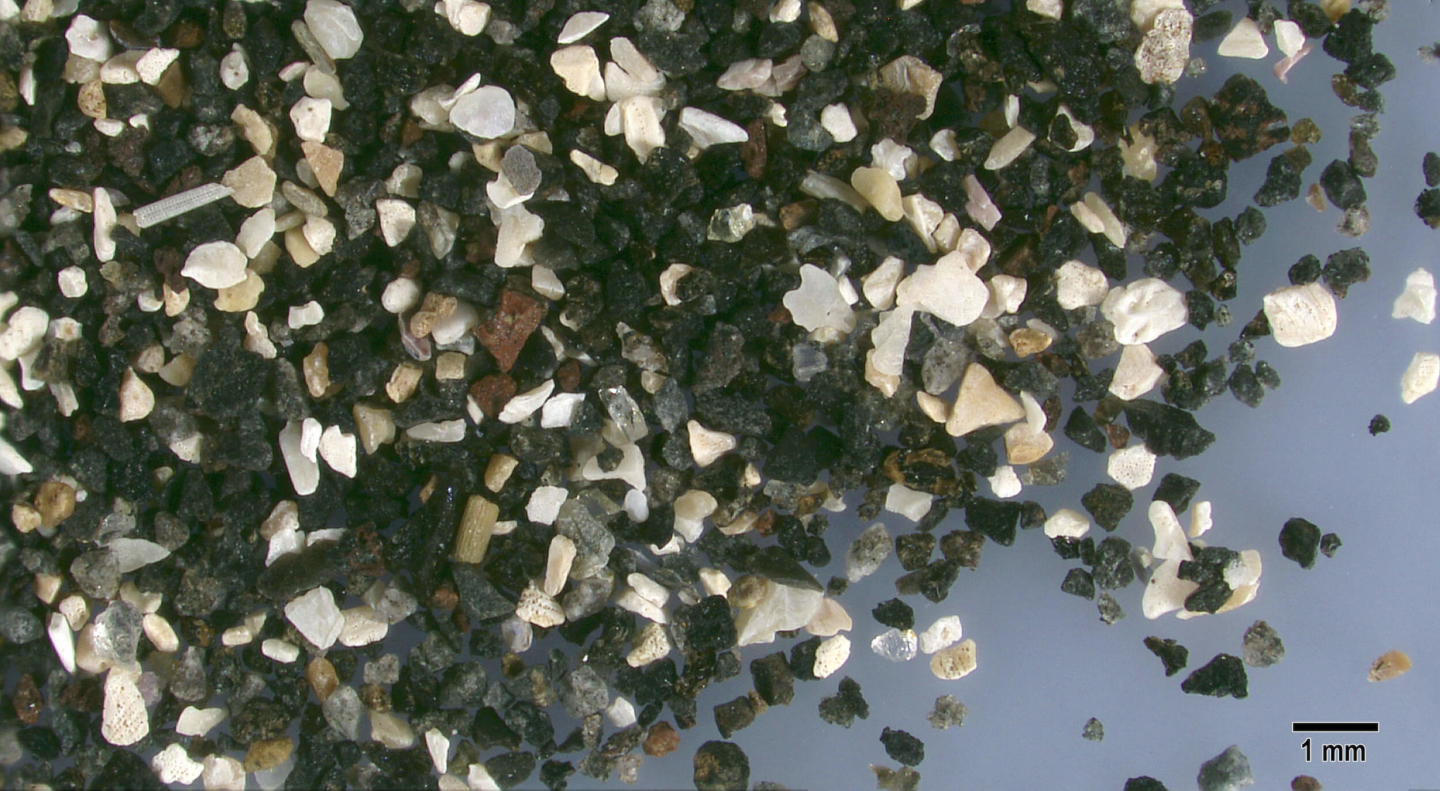
This mixture of volcanic and biogenic sand grains provides a spectrum of shades from white to black. A linear finely grooved grain near the upper left is a sea urchin spine. A tan fragment of a sea urchin spine is just below left center. The reddish brown grains immediately left of center is most likely jasper.
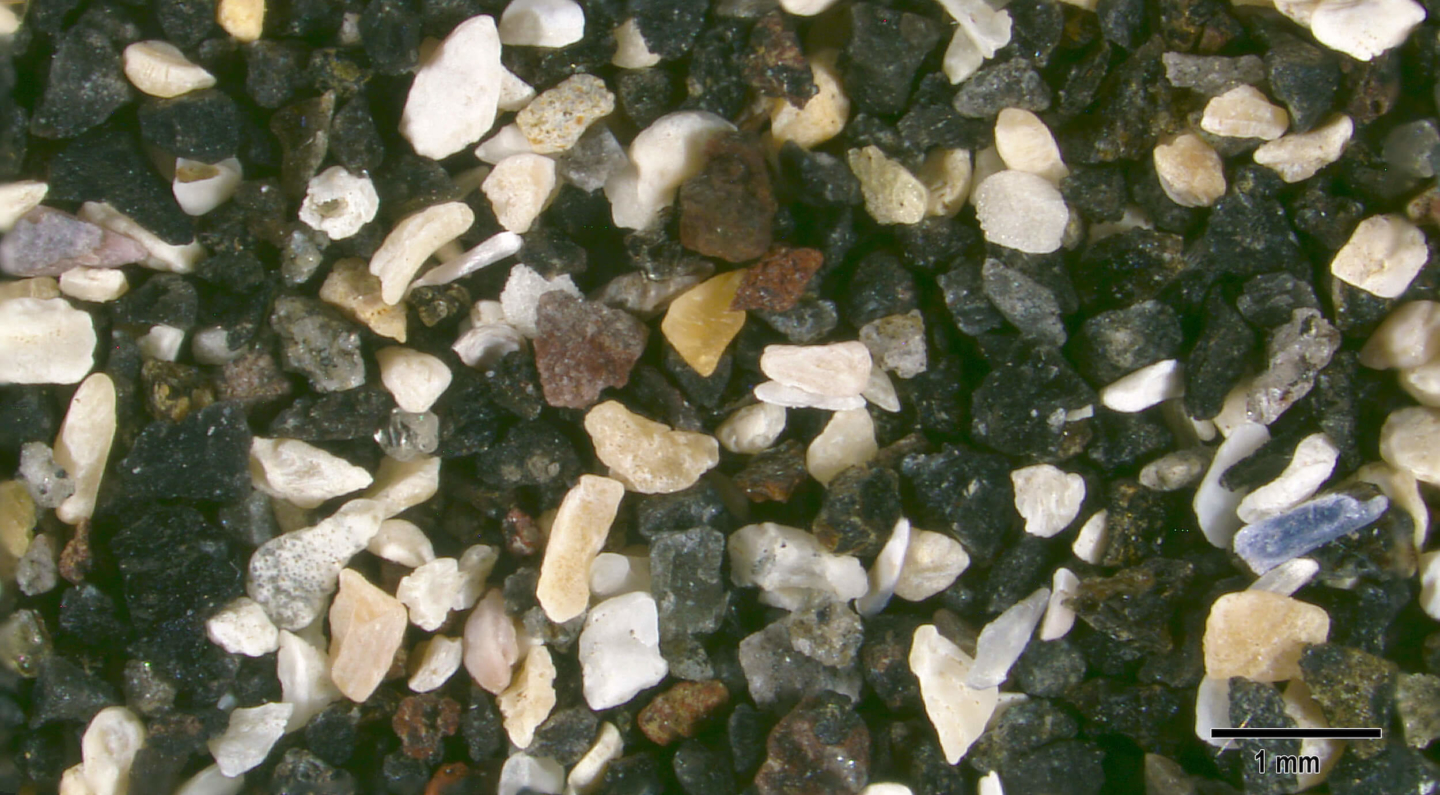
This field shows a mixture of dark basaltic sand grains and white and tan grain fragments of mollusk shells. The blue sand grain on the right above the measurement bar is also of biogenic origin.
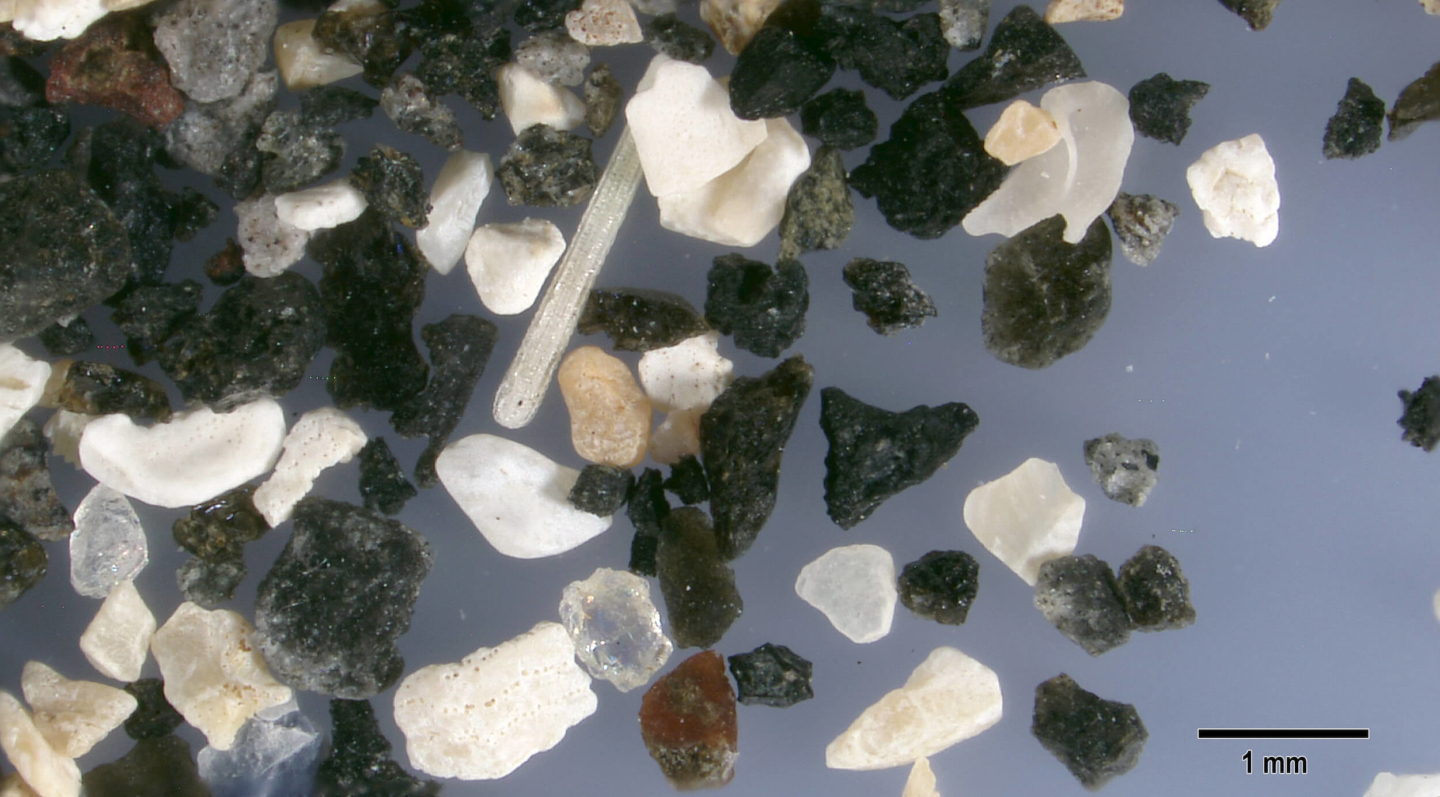
White and light tan sand grains are fragments of marine shells while the black grains are primarily volcanic. A linear sea urchin spine is present just to the left of center. The next image provides identification of some of the sand grains.
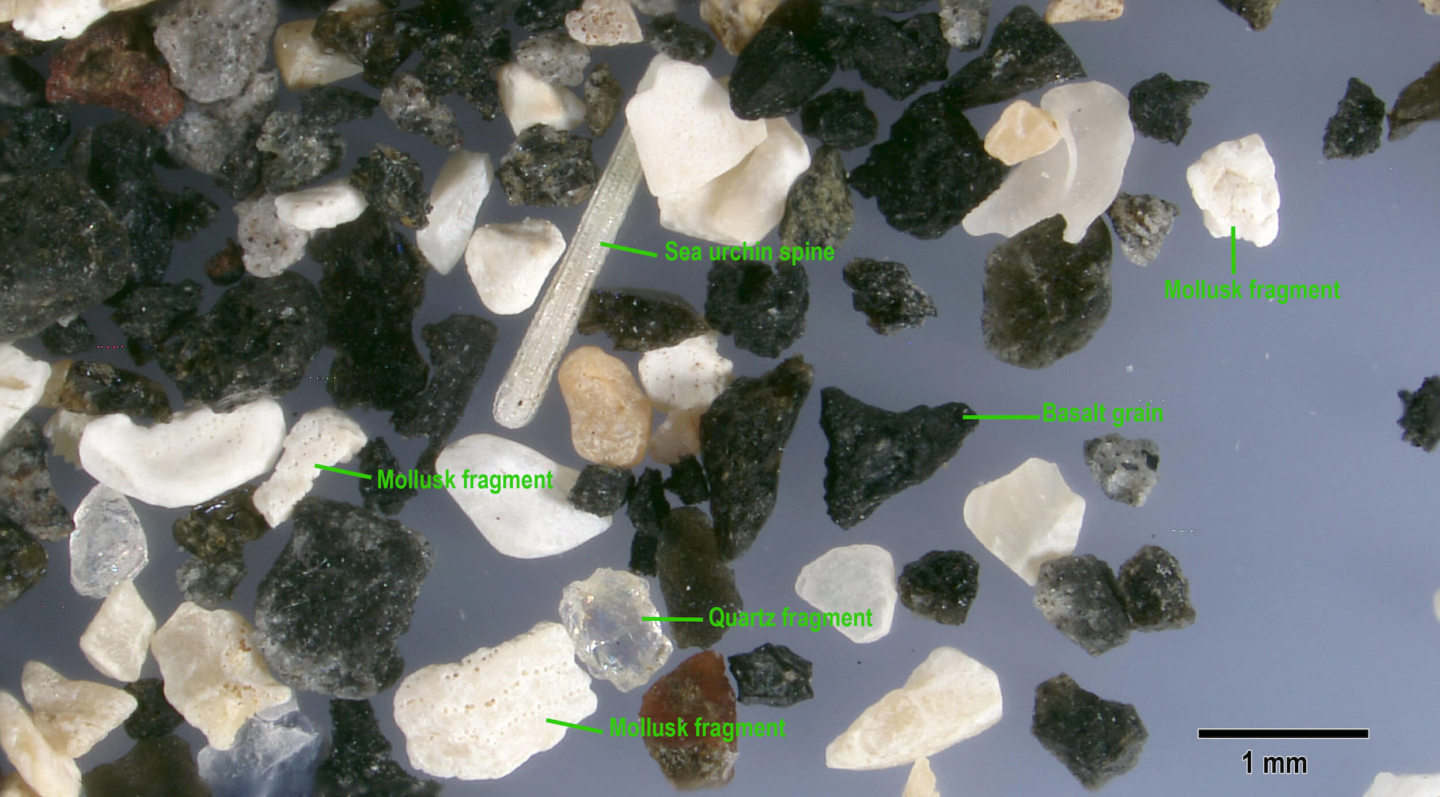
Some sand grains in Figure 4 are identified.

